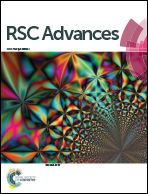Porous amorphous Ge/C composites with excellent electrochemical properties†
Abstract
Porous amorphous germanium/carbon (Ge/C) composites, which were synthesized through the reduction/carbonization of germanium oxide/oleic acid precursors, could exhibit a high-capacity, high-rate and long-life performance due to the synergistic effect of the porous structure and carbon.


 Please wait while we load your content...
Please wait while we load your content...